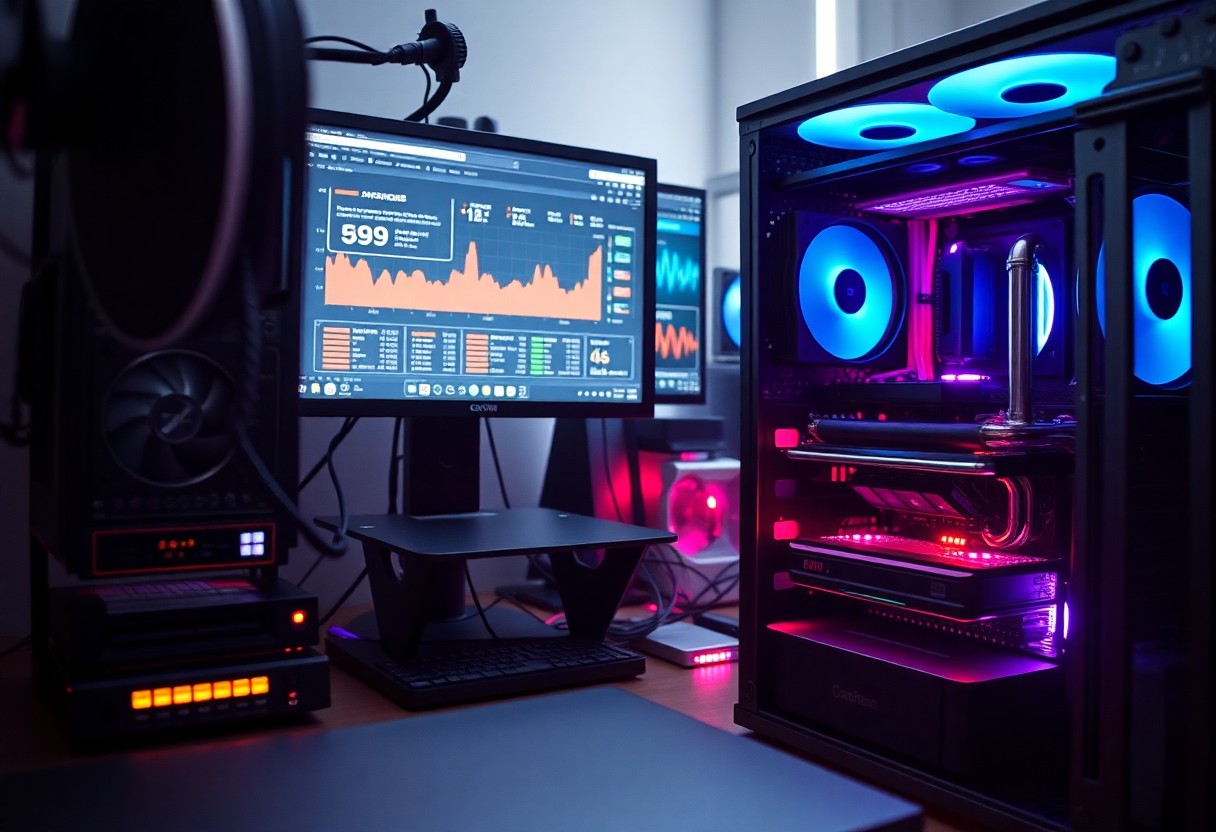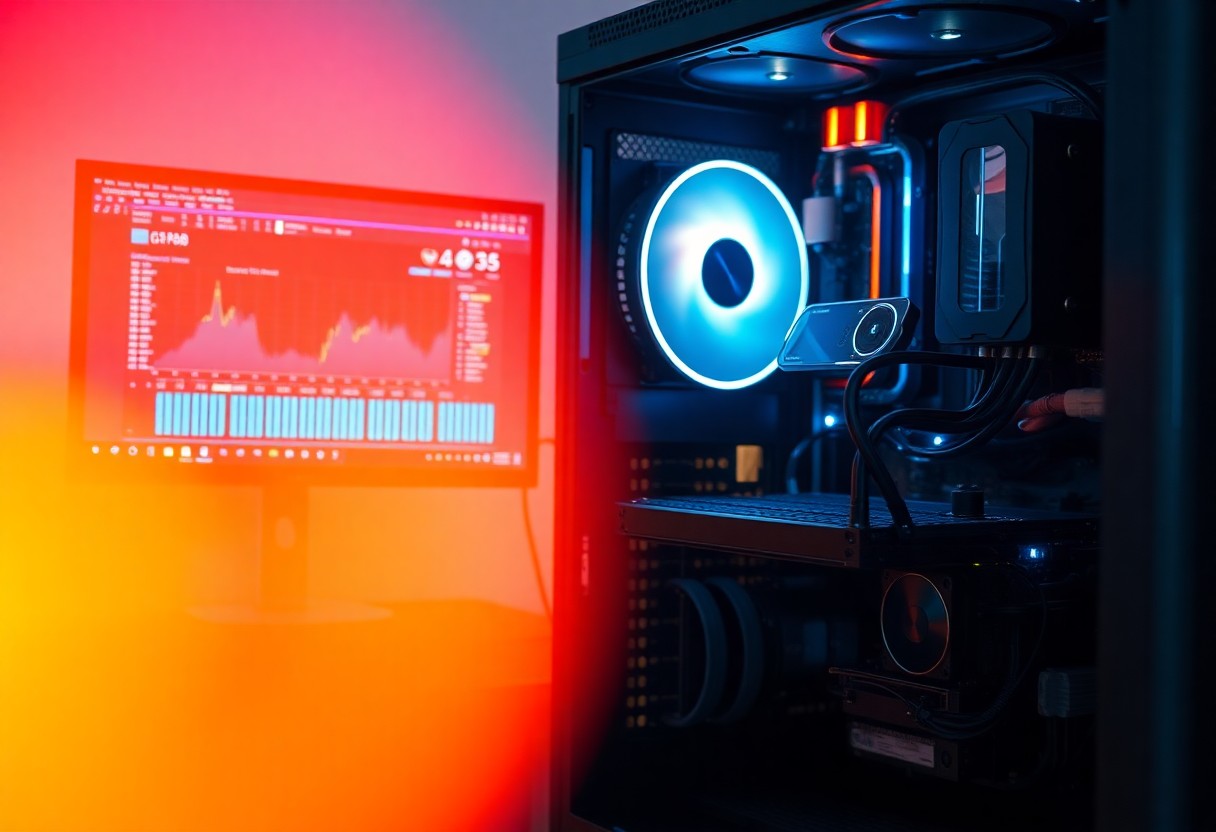PC Bottleneck Calculator
There’s nothing more frustrating than experiencing performance issues in your gaming or graphic-intensive applications due to a GPU bottleneck. This situation occurs when your graphics card is unable to keep up with the demands of your CPU, leading to lower frame rates and poor visual quality. In this blog post, you will learn effective strategies to identify and resolve GPU bottlenecks, ensuring your system runs smoothly and offers the best possible gaming experience. Get ready to optimize your setup and unleash the full potential of your hardware!
Key Takeaways:
- Upgrade Hardware: Consider upgrading your GPU or CPU to balance performance and eliminate bottlenecks.
- Optimize Settings: Adjust game settings to find a balance between quality and performance, focusing on reducing resolutions or disabling resource-heavy options.
- Monitor Performance: Use software tools to monitor GPU and CPU usage during gameplay to identify specific bottleneck issues and adjust accordingly.
Understanding GPU Bottlenecks
Before entering into solutions, it’s imperative to grasp the concept of a GPU bottleneck. This situation occurs when your graphics processing unit (GPU) is the limiting factor in your system’s performance, preventing you from achieving optimal gaming experiences or smooth graphical rendering.
What is a GPU Bottleneck?
Against this backdrop, a GPU bottleneck arises when your CPU processes data at a rate faster than your GPU can render it. This disparity means that even if your CPU is performing well, the overall performance of your system will be held back by the GPU’s limitations.
Symptoms of a GPU Bottleneck
Behind every GPU bottleneck, you may notice specific symptoms affecting your gaming experience. These can include a drop in frame rates, stuttering graphics, and excessive input lag, all of which can hinder your overall gameplay.
And when you experience these symptoms, it’s imperative to address them immediately. If your frame rates drop significantly during resource-intensive tasks or your games exhibit stuttering and input lag, this points directly to bottleneck issues. Such conditions can lead to an unpleasant gaming experience and prevent you from fully enjoying your setup. Paying attention to these indicators will help you identify and rectify a GPU bottleneck effectively.
Identifying the Source of the Bottleneck
The first step in resolving a GPU bottleneck is to accurately pinpoint its source. Understanding where the limitations lie allows you to make informed decisions about necessary upgrades or software adjustments. Start by monitoring your system’s performance metrics, such as FPS, GPU usage, and CPU bottlenecking. This data will help in determining whether your GPU, CPU, or other components are the issue, enabling you to streamline your approach to fixing the problem.
Hardware Limitations
Source of a bottleneck may originate from aging or underpowered hardware. Your GPU could quickly become overwhelmed by modern games if it is an older model. Additionally, further investigation into your CPU’s capabilities is important, as an insufficient processor can hinder the overall performance of your gaming rig.
Software Issues
Across various platforms and games, software misconfigurations can also contribute to a bottleneck. Inadequate drivers or inefficient background processes can severely diminish performance levels, making it important to keep your system optimized.
Hence, you should ensure that your graphic drivers are up to date, as outdated drivers often lead to performance issues and can cause your GPU to operate below its potential. Additionally, check for unnecessary background applications that may consume valuable resources, affecting your gaming or rendering experience. Finally, adjust your in-game settings appropriately, as overly demanding graphics settings can expose weaknesses in your system, thus exacerbating the bottleneck issue.
Upgrading Your GPU
Now is the perfect time to consider upgrading your GPU to alleviate any performance issues you may be facing. A newer graphics card can vastly improve your gaming and productivity experience, allowing you to run demanding applications smoothly. Make sure to analyze your current setup and budget to select the best GPU that meets your needs.
Choosing the Right GPU
With so many options available, selecting the right GPU can feel overwhelming. Begin by assessing your performance requirements, such as resolution and frame rate targets. Additionally, consider budget constraints and compatibility with your existing hardware, like power supply and motherboard slots.
Installation Tips
Above all, here are some useful tips for installing your new GPU:
- Ensure your PC is powered off and unplugged.
- Ground yourself to avoid static discharge damage.
- Follow the manufacturer’s installation guide closely.
- Secure the GPU properly in the PCI-Express slot.
- Reattach and connect any necessary power cables.
Thou should always double-check connections before powering the system back on.
Indeed, taking a few extra precautions during installation can save you from potential headaches. For instance:
- Utilize cable management to prevent damage to your components.
- Consider thermal paste application if relevant.
- Adjust BIOS settings if necessary to recognize your new GPU.
- Monitor your system temps post-installation.
Thou should never rush through these steps to ensure optimal performance and safety.
Optimizing Game Settings
Many gamers experience GPU bottleneck issues, but optimizing your game settings can significantly improve performance. By adjusting various settings, you can ensure that your GPU is not pushed to its limits and can work more efficiently, leading to smoother gameplay and a better overall experience.
Graphics Settings Adjustments
Along with tweaking resolution and texture quality, you should also consider reducing shadow quality and turning off anti-aliasing. These adjustments can help lessen the load on your GPU; thus allowing it to focus more on delivering a consistent frame rate.
Frame Rate Optimization
Below are some techniques to boost frame rates, ensuring your gameplay is smooth and responsive. Lowering the frame rate cap or enabling V-Sync can help reduce screen tearing, while tweaking other performance settings can create a balanced setup tailored to your preferences.
Another effective way to enhance frame rate is utilizing FPS limiters or adaptive settings. By setting a target frame rate, your GPU will not be overworked, leading to fewer performance drops during demanding scenes. Additionally, consider disabling unneeded background applications that consume system resources. Enhancing your GPU performance through these steps can result in a smoother experience, enabling you to focus on the game rather than technical issues that may arise. Always prioritize settings that suit your gaming style while maintaining a great balance between performance and visual fidelity.
Improving System Performance
All components of your system work together to achieve optimal performance. To alleviate GPU bottleneck issues, consider enhancing your overall system performance. This includes upgrading RAM, optimizing your OS settings, and ensuring a powerful CPU. By balancing these components effectively, you will create a more harmonious workflow, leading to better gaming or graphics experiences without the interruptions caused by bottlenecks.
Overclocking Your GPU
To maximize your GPU’s potential, you might consider overclocking. This process involves increasing the clock speed of your GPU to achieve higher performance levels. Ensure that you monitor the temperature and stability during testing, as pushing your hardware can lead to overheating or system crashes if not managed carefully.
System Maintenance Best Practices
Above all, consistent system maintenance is key to ensuring optimal performance. Regularly clean your components, update drivers, and defragment your hard drive to minimize performance issues. A well-maintained system reduces the chances of hardware failure while maximizing overall performance.
And by implementing strong maintenance practices, you can extend the lifespan of your components and improve efficiency. Keeping your GPU drivers and software up to date helps harness improvements and fixes, while cleaning dust out of the case enhances airflow, preventing overheating. It’s necessary to schedule regular checks and updates, as neglecting these aspects can lead to reduced performance or even hardware damage over time.

Monitoring Performance
Your ability to monitor performance is vital for identifying and resolving GPU bottlenecks. By keeping a close eye on your system’s metrics, you can pinpoint issues such as high GPU utilization percentages, frame rates, and temperature levels. Utilizing performance monitoring tools will help you track these metrics in real time, allowing you to make informed adjustments and improve your gaming or workstation experience.
Tools for Benchmarking
Along with performance monitoring tools, benchmarking software is imperative for assessing the capabilities of your graphics card. Options like 3DMark and Unigine Heaven offer comprehensive tests that measure various performance aspects under heavy loads. By utilizing these tools, you can obtain a better understanding of your GPU’s limits and identify specific areas that may require optimization.
Analyzing Performance Data
One key aspect of fixing a GPU bottleneck is effectively analyzing performance data collected from your monitoring and benchmarking tools. This step allows you to interpret the trends and metrics that indicate whether your GPU is under strain.
Consequently, diving deep into the performance data can reveal significant patterns that affect your system’s efficiency. Look for framerate drops, GPU utilization spikes, and temperature readings that exceed normal ranges. Understanding whether your GPU is consistently maxed out or if other components, like the CPU, are limiting performance will help you make effective adjustments. Identifying these strong correlations between bottlenecks and performance will guide you toward the best solutions, ensuring you achieve an optimized system for your needs.
Conclusion
To wrap up, addressing GPU bottlenecking involves upgrading your graphics card, optimizing in-game settings, and tweaking system configurations for better performance. Make sure your CPU is sufficiently powerful to assist your GPU, and consider options like overclocking for extra efficiency. Regular software updates and ensuring your drivers are current can also enhance performance. By taking these steps, you’ll maximize your gaming experience and enjoy smoother gameplay with less lag.

